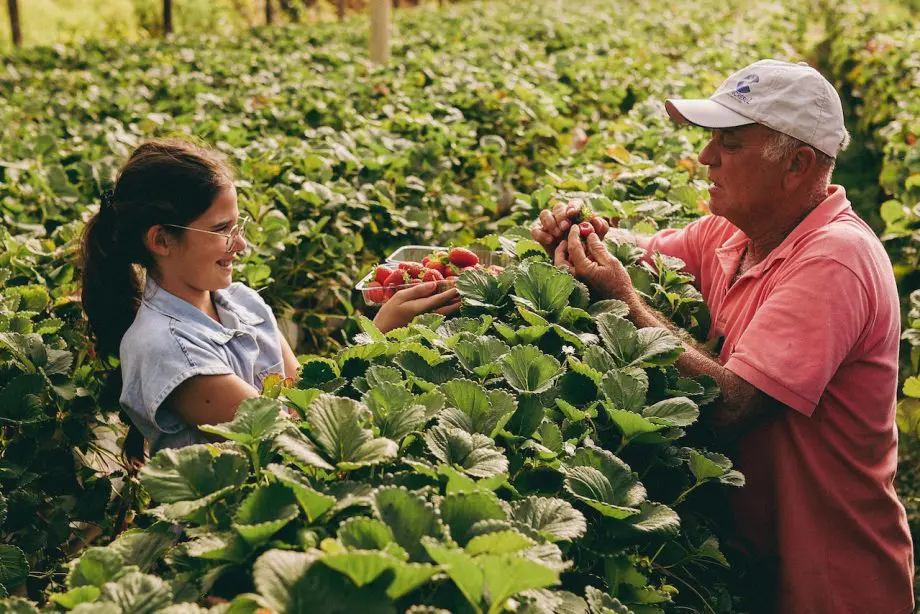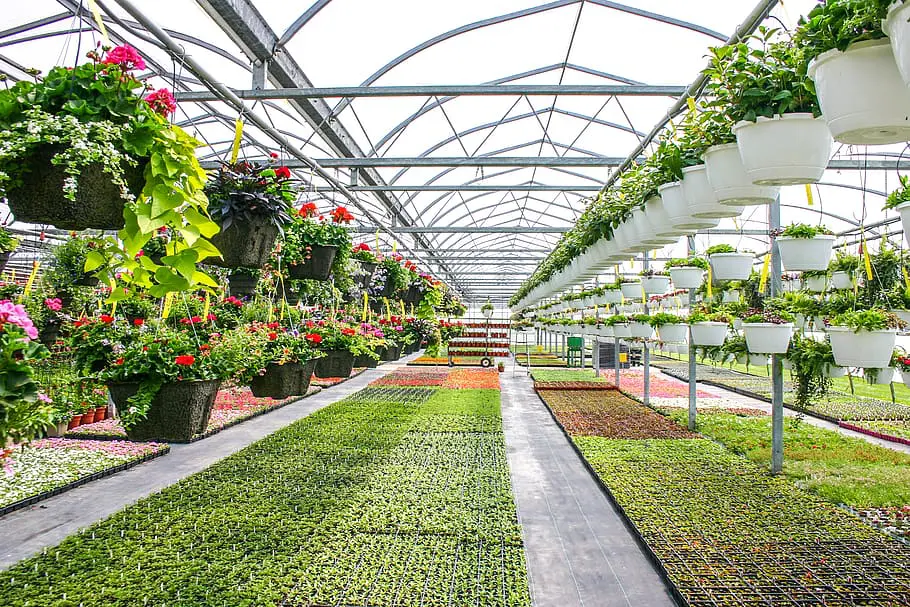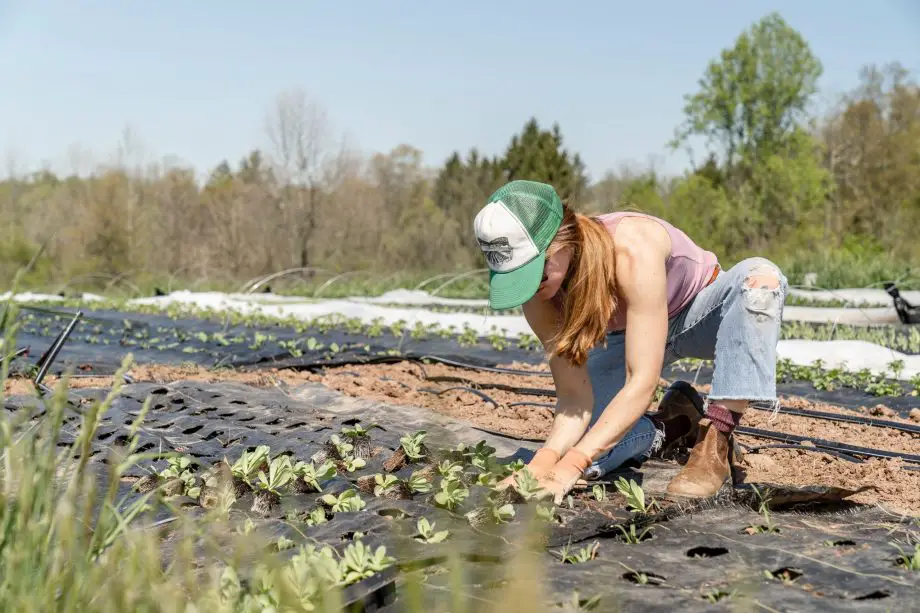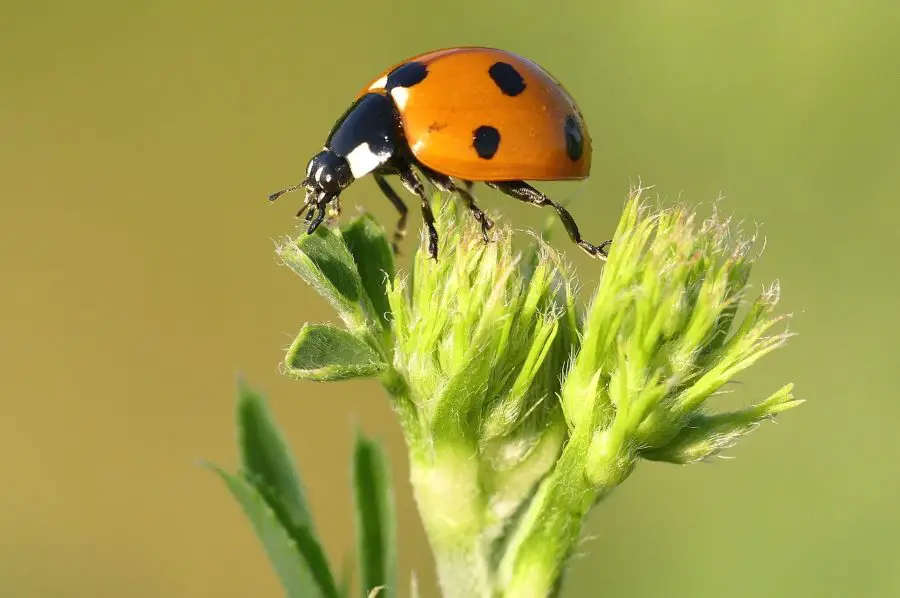
Wondering how can integrated pest management help crops? Dive into our comprehensive guide to discover how IPM boosts yield and saves the planet!
So, you’re scratching your head, asking, How can integrated pest management help crops? Well, you’re in for a treat!
Our article dives deep into the world of IPM, a game-changer in modern agriculture.
Stick around to uncover the secrets of boosting crop yields while being a friend to Mother Earth. Trust us, you won’t want to miss this!
How Can Integrated Pest Management Help Crops
Integrated pest management can help crops by reducing the reliance on chemical pesticides, leading to healthier soil and less environmental impact. IPM uses a combination of biological, mechanical, and cultural methods to control pests effectively. This results in higher crop yields, cost savings for farmers, and safer produce for consumers.
Integrated Pest Management (IPM) is a holistic approach to controlling pests in agricultural settings.
Unlike traditional methods that rely heavily on chemical pesticides, IPM combines various strategies to manage pests effectively and sustainably.
Given the increasing concerns about environmental degradation and food safety, IPM has become a cornerstone in modern agriculture.
This article aims to explore the concept, benefits, methods, and real-world applications of IPM, shedding light on its significance for both farmers and consumers.
The Concept of Integrated Pest Management
Ready to get into the nitty-gritty of what Integrated Pest Management is all about?
This isn’t your grandpa’s bug zapper; we’re talking about a whole new level of smart farming.
From its humble beginnings to its core principles, we’ll walk you through everything you need to know.
Whether you’re a farmer, a gardener, or just someone who loves a good apple, understanding the concept of IPM is a game-changer. Let’s dive in!
Integrated pest management (IPM), also known as integrated pest control (IPC) is a broad-based approach that integrates both chemical and non-chemical practices for economic control of pests. IPM aims to suppress pest populations below the economic injury level (EIL). From Wikipedia
Historical Background
Ah, the 1950s—a time of rock ‘n’ roll, poodle skirts, and, you guessed it, the birth of IPM!
Back then, synthetic pesticides like DDT were all the rage. They were like the new kid on the block that everyone wanted to hang out with.
But soon, we realized they weren’t as cool as we thought. These chemicals were causing more harm than good by polluting waterways, killing off beneficial insects, and even posing health risks to humans.
That’s when the smart folks in the agricultural world said, Hold on, there’s got to be a better way!
And voilà, IPM was born as a more thoughtful, eco-friendly approach to dealing with pests.
Core Principles
Alright, let’s break down the four pillars that make IPM the rockstar it is today.
Monitoring: Think of this as the neighborhood watch for your crops. Regular check-ins and observations help you know what’s going on in your field. Are the pests throwing a party, or is it just a lone ranger causing trouble? Monitoring helps you keep tabs.
Identification: This is like the CSI of pest control. You’ve got to know who you’re dealing with before you take any action.
Is it a harmful pest or a beneficial insect? Accurate identification ensures you’re not declaring war on the good guys.
Decision-making: Now, this is where you put on your thinking cap.
Is the pest population at a level where you need to intervene, or can Mother Nature handle it herself?
This step helps you weigh your options and make informed choices.
Intervention: Finally, it’s action time! But instead of going in guns blazing with chemicals, IPM encourages you to start with the least harmful methods.
Maybe a natural predator can handle it, or perhaps some mechanical traps will do the trick.
Goals of IPM
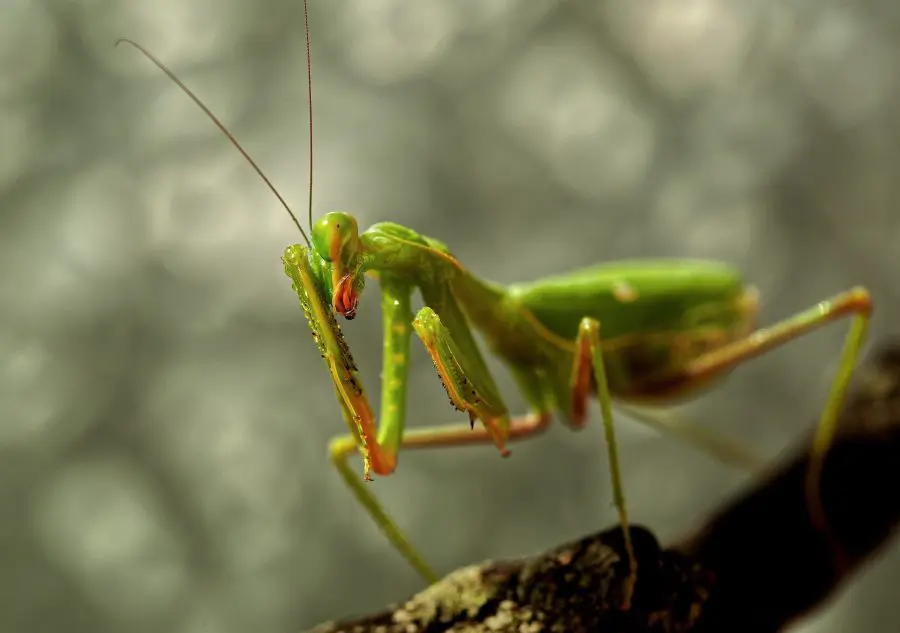
So, what’s the endgame here? Why go through all this trouble?
Ready to dive into the endgame of Integrated Pest Management (IPM)? I bet you are!
Goals are like the North Star that guides a ship, and in the world of IPM, they’re what makes all the effort worthwhile.
From environmental sustainability to economic benefits and even social impact, IPM aims to hit some pretty lofty targets.
So, let’s unpack these goals one by one and see why they’re the driving force behind this revolutionary approach to pest management. Trust me, you’ll want to stick around for this!
Environmental Sustainability:
First and foremost, IPM aims to be a friend to the Earth. By minimizing the use of harmful chemicals, it helps keep our soil, water, and air clean. It’s like giving Mother Nature a helping hand.
Economic Viability:
Let’s talk money. IPM might require a bit more effort upfront, but it pays off in the long run.
Fewer chemicals mean fewer expenses and healthier crops often lead to better yields. It’s a win-win for farmers.
Social Acceptability:
Last but not least, IPM wants to keep things safe and sound for us humans and our furry or feathered friends.
By reducing chemical use, it lowers the risk of harmful residues in our food and safeguards farmworkers and wildlife.
And there you have it, a deep dive into the what, why, and how of Integrated Pest Management. Isn’t it fascinating how much thought goes into keeping our crops healthy and our planet happy?
Benefits of IPM for Crops
Alright, now that we’ve got the basics down, let’s talk about the good stuff namely the perks of using IPM!
I mean, who doesn’t love benefits, right? Whether you’re a farmer looking to boost your yield or an eco-warrior aiming to save the planet, IPM has something for everyone.
From cutting down on those pesky chemical costs to making your crops the talk of the town, we’re about to dive into all the ways IPM is the gift that keeps on giving.
Reduced Use of Chemical Pesticides
Imagine a world where you don’t have to douse your crops in chemicals just to keep the bugs away. Sounds dreamy, right?
Well, that’s what IPM is all about. By using a mix of biological, mechanical, and cultural methods, you can significantly cut down on the chemical warfare in your fields.
And guess what? Less chemicals mean cleaner soil and water. It’s like giving your farm a detox!
Cost-Effectiveness
Okay, let’s talk dollars and cents. Sure, setting up an IPM system might feel like you’re splurging at first.
You’ve got to invest in monitoring tools, maybe some traps, and perhaps even some friendly bugs to eat the not-so-friendly ones.
But here’s the kicker: In the long run, you’ll actually save money.
How? Well, you’ll be buying fewer chemicals, for starters. Plus, healthier crops often mean better market prices.
So, it’s like an investment that pays you back with interest!
Improved Crop Yield
Who doesn’t want more bang for their buck? With IPM, you’re not just randomly killing off all insects; you’re targeting the bad guys while letting the good guys do their thing.
This means your crops grow in a more balanced ecosystem, leading to better yields.
It’s like having a team of tiny superheroes guarding your fields, making sure you get the most out of your harvest.
Environmental Benefits
If you’re the kind of person who gets a warm, fuzzy feeling from doing something good for the planet, then you’re going to love this.
IPM is all about being eco-friendly. By cutting down on chemicals, you’re not just saving money.
You’re also conserving biodiversity and preventing soil degradation. It’s like you’re giving Mother Earth a big, loving hug!
Human and Animal Health
Last but definitely not least, let’s talk about the health factor. Fewer chemicals don’t just mean a happier Earth and they also mean happier people and animals.
Farmworkers face fewer health risks from chemical exposure, and we consumers get to enjoy cleaner, safer produce.
Even the birds and the bees get to live a little easier. It’s a win-win-win!
So there you have it, folks! From saving money to saving the planet, the benefits of IPM are just too good to ignore. Why not give it a try?
Methods and Techniques in IPM
We’ve talked about the what and the why, so now let’s get into the how!
You’re probably wondering, Okay, IPM sounds great and all, but how do I actually do it? Well, you’re in luck!
We’re about to dive into the nitty-gritty of the methods and techniques that make IPM the superstar it is.
From unleashing predator bugs to setting up the coolest traps, we’ve got all the deets to turn you into an IPM pro.
So, let’s roll up those sleeves and get our hands dirty, shall we?
Biological Control
Ever heard the saying, The enemy of my enemy is my friend? Well, that’s the gist of biological control.
You bring in natural predators—like ladybugs to munch on aphids or spiders to tackle other insects.
It’s like hiring a security team for your crops, but instead of paying them in cash, you pay them in all-you-can-eat bug buffets. Pretty neat, huh?
Cultural Practices
Now, let’s talk about some farming hacks that can make your life a whole lot easier.
Crop Rotation: Imagine eating the same meal every day. You’d get bored, right? Well, pests feel the same way.
By changing up the crops you plant each season, you’re essentially throwing pests off their game.
They show up expecting a feast and find an empty table. Bummer for them, great for you!
Intercropping: This is like throwing a mixed-genre music festival instead of a single-band concert.
By planting different types of crops close together, you make it harder for pests to find their favorite snack.
Plus, some plants naturally repel certain pests, so it’s a win-win!
Mechanical Methods
Sometimes, you’ve got to roll up your sleeves and get hands-on with pest control. That’s where mechanical methods come in.
Traps: Think of this as setting up a speed trap but for bugs. Pheromone traps lure pests in and capture them, making it easier for you to assess the situation and take action. It’s like your own little bug jail!
Barriers: This is the agricultural equivalent of a Keep Out sign. Physical barriers like nets or row covers prevent pests from getting to your crops in the first place. It’s a simple but effective way to say, Not on my watch, bugs!
Chemical Control
Okay, sometimes you just can’t avoid using chemicals, but the key is to be smart about it.
Types of Pesticides: You’ve got options here. Organic pesticides are like the herbal teas of the chemical world, gentler and more natural.
Synthetic ones are like strong coffee, effective but to be used sparingly.
Timing and Application: Timing is everything. You want to spray when the pests are most active and vulnerable.
It’s like catching them red-handed and saying Gotcha!
And there you have it! From natural predators to smart farming practices and even the judicious use of chemicals, IPM offers a toolbox full of options to keep those pesky pests in check. Ready to give it a whirl?
Case Studies
Ready to see Integrated Pest Management (IPM) in action? I thought you might be!
It’s one thing to talk about all these cool methods and benefits, but it’s another to see real-world examples, right?
So, we’ve rounded up some fascinating case studies that showcase IPM doing its thing in various types of farming.
From cornfields to organic veggie patches and even fruit orchards, you’re about to get a front-row seat to the magic of IPM.
IPM in Corn Farming
Corn is the golden staple of American agriculture. But let’s face it, pests love corn as much as we do.
That’s where IPM comes in. Farmers have been using IPM techniques like pheromone traps to monitor corn borer activity.
Once they know what they’re up against, they introduce natural predators like ladybugs and lacewings.
The result? A significant drop in corn borer numbers, less damage to the corn, and you guessed it, higher yields!
It’s like having a security system specifically designed for your cornfield.
IPM in Organic Vegetable Farming
If you’re into organic veggies, this one’s for you! Organic farmers have a unique challenge because they can’t just reach for any old pesticide when pests come knocking.
So, IPM becomes their best friend. They use techniques like crop rotation and intercropping to keep pests guessing.
For example, planting marigolds next to tomatoes can deter nematodes. It’s like playing a game of chess with pests, and IPM gives organic farmers the winning moves.
IPM in Fruit Orchards
Ah, the sweet smell of fruit orchards! But it’s not all sunshine and rainbows.
Pests like apple maggots and citrus greening disease can wreak havoc.
Enter IPM. Farmers use a combo of methods here, from introducing predatory insects to using pheromone traps and even some targeted, eco-friendly sprays.
The result is healthier trees, juicier fruits, and a much lower environmental impact.
It’s like giving your orchard a wellness retreat, complete with spa treatments for the trees!
And there you have it—IPM isn’t just a one-trick pony.
It’s a versatile approach that’s making a difference across various types of farming.
Whether you’re growing corn, organic veggies, or even fruits, IPM has got your back. So, inspired to give it a try yet?
Challenges and Limitations
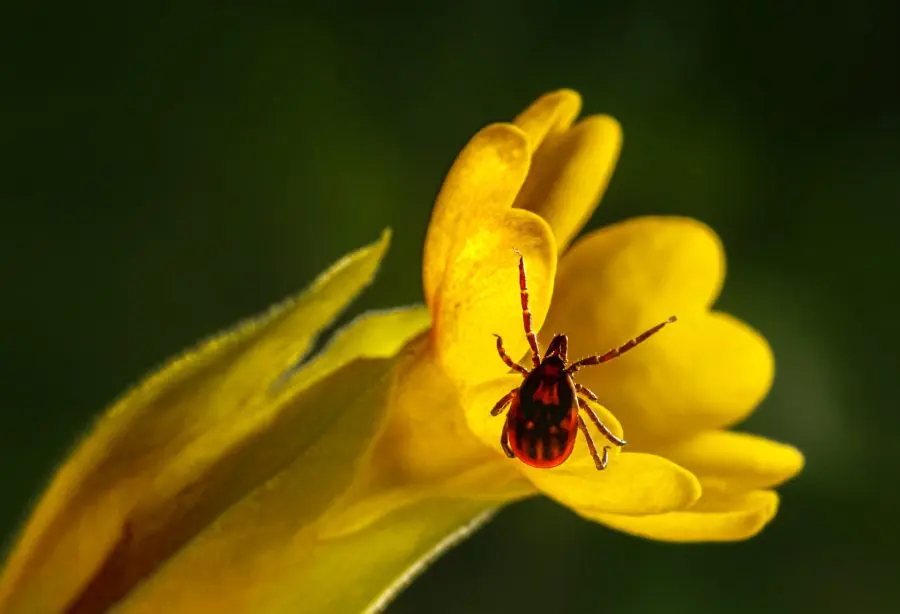
Alright, let’s get real for a second. As much as we’d love to say that IPM is all sunshine and rainbows, it’s only fair to talk about the bumps in the road too.
Yep, even this eco-friendly, cost-saving approach has its challenges and limitations. But hey, what doesn’t, right?
So, let’s pull back the curtain and take a candid look at some of the hurdles you might face when diving into the world of Integrated Pest Management.
Trust me, it’s better to know what you’re up against so you can tackle it head-on!
Initial Costs
Okay, let’s talk about the elephant in the room, money. Setting up an IPM system isn’t exactly a drop in the bucket.
You’ll need monitoring tools, maybe some traps, and perhaps even a batch of beneficial bugs to kick things off.
It’s kind of like buying a high-end smartphone; the upfront cost can be a bit of a sticker shock.
And for small-scale farmers, this initial investment can feel like a steep hill to climb. But remember, it’s an investment that pays off in the long run.
Knowledge and Skill Requirements
So, you’re ready to dive into IPM. Awesome! But hold your horses; this isn’t a one-size-fits-all kind of deal.
You’ll need to really get to know your pests almost like on a first-name basis.
Understanding their life cycles, what they like to eat, and when they’re most active is crucial.
It’s like being a detective but for bugs. And let’s be honest, not everyone has the time or expertise to become a bug sleuth. So, the learning curve can be a bit steep.
Regulatory Hurdles
Last but not least, let’s talk about the rulebook. Depending on where you’re farming, there might be some red tape around using certain types of biological controls.
It’s like wanting to throw a big party but finding out your neighborhood has noise restrictions.
These regulations can put a damper on your IPM plans, making it less effective than you’d hoped.
Always make sure to check local and national guidelines before diving in.
And there you have it! While IPM has a ton of benefits, it’s not without its challenges.
But hey, nothing worth doing ever is, right? So, if you’re up for tackling these hurdles, the rewards can be pretty sweet.
FAQs
Alright, we’ve covered a lot of ground, haven’t we? But let’s be real, you probably still have a few burning questions simmering in the back of your mind.
No worries, we’ve got you covered! We’ve rounded up some of the most frequently asked questions about Integrated Pest Management to quench your thirst for knowledge.
From the basics to the nitty-gritty, we’re about to tackle it all. So, if you’ve been nodding along but secretly wondering about a few things, this is your moment! Let’s get those questions answered, shall we?
Q: What is Integrated Pest Management?
A: Integrated Pest Management, or IPM for short, is like the Swiss Army knife of pest control.
It’s a holistic approach that combines a variety of methods, biological, mechanical, and even some chemical to manage pests in the most effective and eco-friendly way possible.
It’s all about being smart and targeted in your approach, rather than just blasting your fields with chemicals.
Q: How does IPM differ from traditional pest control?
A: Great question! Traditional pest control is like using a sledgehammer to crack a nut. It’s effective but overkill.
It often relies heavily on chemical pesticides, which can harm the environment and even the crops themselves.
IPM, on the other hand, is more like a surgical strike. It uses monitoring and identification to apply the most effective, least harmful solutions.
So, you’re not just protecting your crops; you’re also being a good steward of the land.
Q: Is IPM cost-effective?
A: Ah, the million-dollar question! Initially, IPM can feel like you’re splurging on a fancy dinner.
There are setup costs for monitoring systems, traps, and maybe even some beneficial bugs.
But here’s the kicker: In the long run, you’ll likely spend less on chemicals and enjoy healthier, more abundant crops.
So, it’s more like an investment that pays dividends down the line.
Q: Can IPM be used in organic farming?
A: IPM and organic farming go together like peanut butter and jelly.
Since IPM minimizes the use of synthetic chemicals, it fits right in with the organic ethos.
Many organic farmers rely heavily on IPM techniques like biological control and crop rotation to keep pests at bay while sticking to organic guidelines.
And there you have it! Hopefully, that clears up any lingering questions you had about Integrated Pest Management.
Feel free to dive deeper into any of these topics; there’s always more to learn!
Conclusion
IPM is more than just a method. It’s a philosophy that aims for a balanced, sustainable approach to pest management.
It offers a plethora of benefits, from economic savings to environmental conservation.
As we look to the future, adopting IPM practices will be crucial for sustainable agriculture and food security. It’s high time for farmers, policymakers, and consumers to come together and make IPM the norm rather than the exception.
Next Steps for Adopting IPM
So, you’re sold on IPM and want to take the plunge, but where do you start?
First things first, education is key. Whether you’re a farmer or a home gardener, there are plenty of resources and workshops available to get you up to speed.
It’s like going back to school, but for something you’re actually passionate about!
And don’t forget to reach out to local agricultural experts or extension services; they’re like your personal IPM mentors.
The Role of Technology in Advancing IPM
Let’s not forget about the techy side of things. With advancements in technology, monitoring and managing pests have become more efficient than ever.
From drone surveillance to smart traps that send alerts to your phone, technology is making it easier to implement IPM.
It’s like upgrading from a flip phone to a smartphone; the basics are the same, but the capabilities are next-level.
And there you have it! From understanding the basics to diving into real-world applications and even looking at what the future holds, we’ve covered the A to Z of IPM. Ready to make the change?






